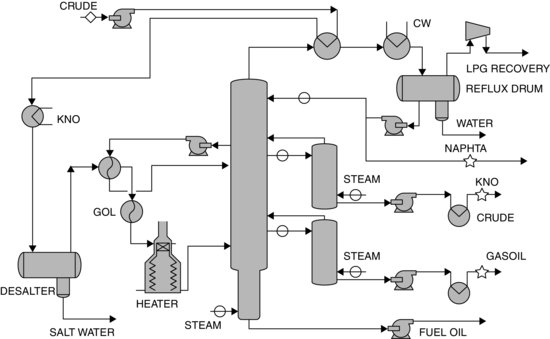11
Autonomous Learning Sensors for Chemical and Petrochemical Industries
One of the most interesting applications of ALS for prediction and estimation is for self-calibrating (intelligent/smart/soft/inferential) sensors. They are applicable in various industries, but most widely in chemical and petrochemical branches. In this chapter there will be some illustrative examples of the research work the author did collaboratively with Dr. Jose Macias Henrandez from CEPSA oil refinery, Santa Cruz de Tenerife, Spain and Dr. Arthur Karl Kordon, The Dow Chemical, Freeport, Texas, USA.
11.1 Case Study 1: Quality of the Products in an Oil Refinery
11.1.1 Introduction
In oil refineries the crude oil is separated in different (quality) petroleum cuts (being refined) in distillation towers by lateral extraction (Macias and Feliu, 2000; Macias, Angelov and Zhou, 2006), see Figure 11.1.
Figure 11.1 A schematic representation of a distillation unit (adapted from Macias-Hernandez and Angelov from Angelov, Filev and Kasabov © John Wiley & Sons, Ltd., 2010). The points at which the data are measured periodically (with high frequency) using conventional (‘hard’ sensors) are indicated with circles. Points at which the product is taken and its quality is to be predicted are indicated with stars and the point at which the crude enters the distillation unit is indicated by a diamond

These cuts include: ...
Get Autonomous Learning Systems: From Data Streams to Knowledge in Real-time now with the O’Reilly learning platform.
O’Reilly members experience books, live events, courses curated by job role, and more from O’Reilly and nearly 200 top publishers.

